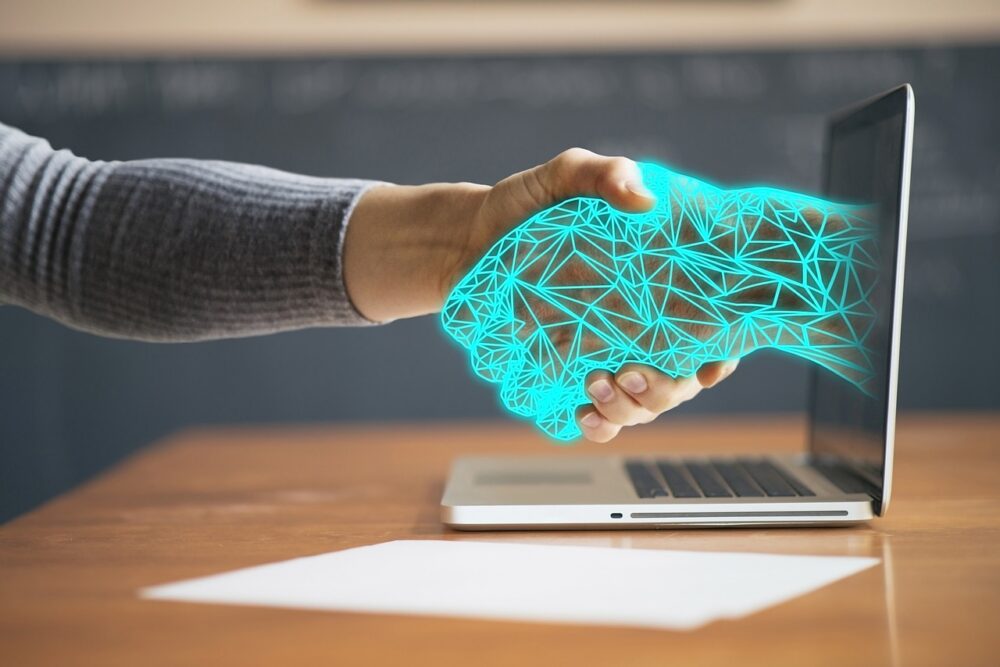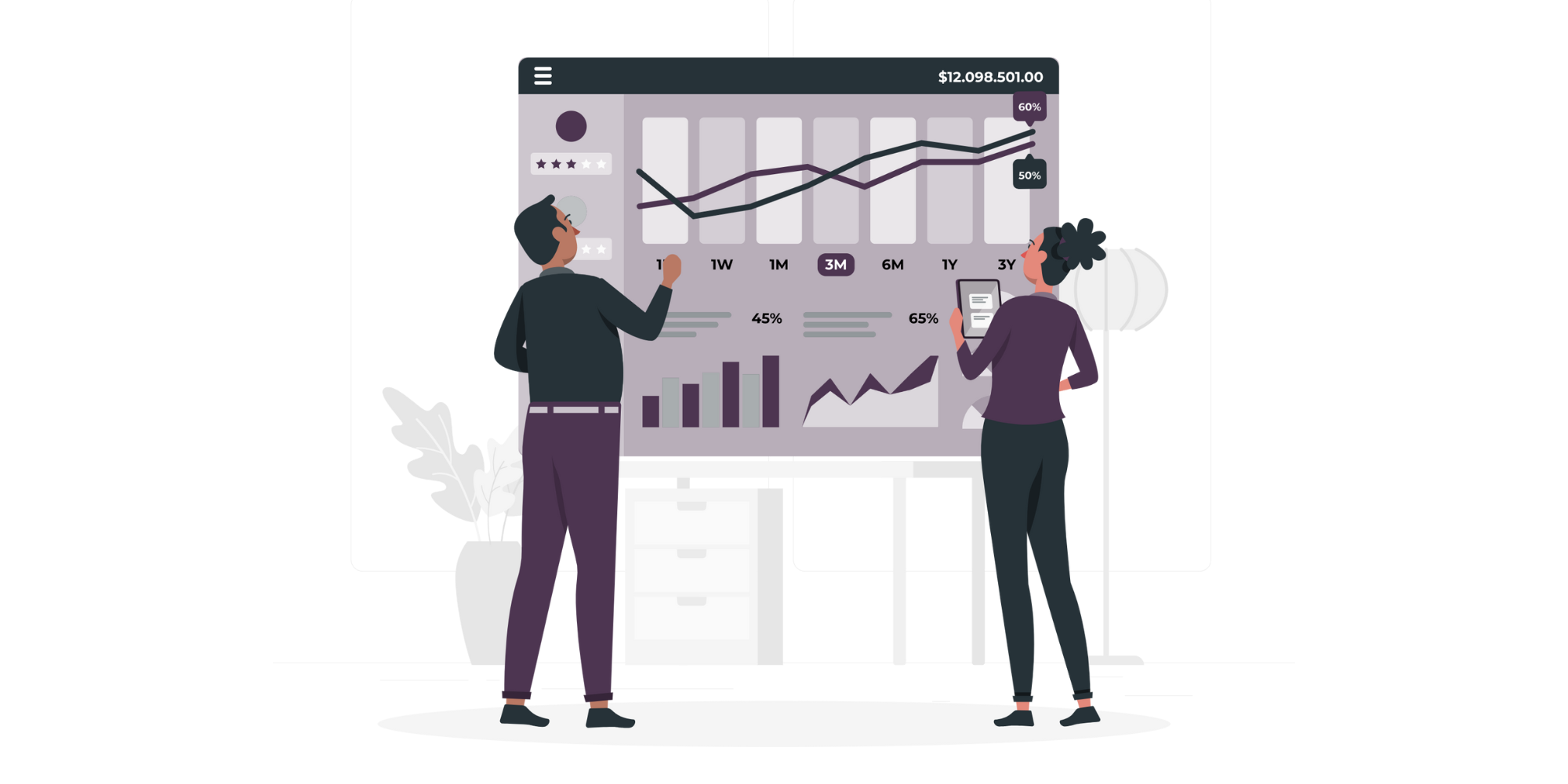These three fields in Human Resources are going to change profoundly thanks to AI

Like other departments dealing with people and communication, HR is facing a thorough digital transformation. Artificial intelligence implementation is a case in point.
With AI, the Czech job market may experience leapfrogging in the nearest future. This happens when a poorly developed technology or economic base can move itself forward rapidly through the adoption of modern systems, without going through intermediary steps. Under these circumstances, those HR specialists who are fluent in AI may become global stars.
AI does not only accelerate and simplify existing mechanisms and processes; it is much more than proofreading or writing tools many of us use daily. Soon, it will enable deep structural changes in Human Resources.
We asked HRIS specialists at Sloneek which three fields of HR they think are going to skyrocket thanks to AI. What is worth learning and investment?
1) Recruitment and Onboarding
AI readiness: 80%
AI efficiency improvement index: very high
Implementation threshold: very low
Major obstacles: low knowledge level, HR specialists being unaware of many opportunities
AI proves useful at mundane yet necessary executive tasks, regardless of the industry. In HR, such tasks include candidate pre-selection, job ad creation, checklist creation, automatic form completion, etc. Even free AI tools (with a tiny bit of human touch) manage executive work that would otherwise burden your highly qualified, senior HR specialists, taking over half of their work hours. Nowadays, AI tools are capable of replacing a full-time junior HR executive, and their potential is only going to grow.
The HRIS Expert Panel at Sloneek estimates that AI will routinely manage candidate pre-selection and the substantial part of employee onboarding as early as next year. Algorithms will be able to assess the efficiency of a given recruitment campaign and then, based on the assessment results, fine-tune the recruitment kits or rewrite job ads.
Speaking of candidate pre-selection, AI can evaluate a job–candidate match, based on the candidate’s CV or LinkedIn profile. If someone’s profile partially matches job requirements, AI tools automatically ask them to provide all remaining necessary details to reevaluate the match. We bet every HR executive would like to be given shortlists of relevant candidates, so that they don’t waste their valuable time with preselection.
Furthermore, AI will take care of the onboarding process and gather basic employee feedback for the following one-on-one session between the employee and their manager or HR specialist.
Another key element of employer-to-employee communication is the AI Buddy, available 24/7, in most languages. The tool learns from a company’s Wikipedia, which is often too extensive for a human employee to read through.
The AI Buddy can answer the candidate’s practical questions, but also introduce them to the company’s culture. First surveys show that candidates feel comfortable asking the AI Buddy difficult questions they wouldn’t dare to ask a human colleague.
The future is now – try our AI Assistant for free
At Sloneek, we’ve made a first step toward the future by implementing an AI Assistant. It now communicates with more than 13,000 employees at over 300 companies. Users get a smart conversation partner who helps them navigate our app, find relevant data, and get assistance during the onboarding process. The tool also creates competency-based models and goals. It solves 80% of simple or moderately complex cases and answers employee questions without engaging HR specialists. Soon, the tool will be able to ask its own questions. As we all know, plain scoring questions (i.e. “How do you feel at work on a scale from 1 to 10?”) won’t cut it. Humans are far more sophisticated. Our tool will ask complex questions to evaluate employee satisfaction, their drive to work, and possible career development paths. Upon gathering and assessing the data, it will forward the feedback to HR specialists responsible for solving a particular issue or creating new opportunities. Sounds good? Try it for free.
2) People Management
AI readiness: 40%
AI efficiency improvement index: very high
Implementation threshold: medium
Major obstacles: Lacking corporate strategies for talent management and intensive competency development.
In Czech companies, competency models are still in their infancy. Even when they’re being applied in HR metrics, their exploration is often suboptimal since they’re not properly integrated with other data on employee development. The truth is, to process the outputs of competency model analysis correctly requires exceptional abilities.This is where AI steps in and does its job.
Sound kind of abstract?
Let us explain further. A company’s bottom line heavily depends on employment costs. The formula is clear: employee’s economic contribution to the company minus employee care (recruitment and onboarding costs, insurance, leaves, etc.).
Hiring a new person costs money. Employee development and retention costs even more. People need to see a long-term future and feel satisfaction if they’re expected to bring value to the organization. If you fail to motivate your employees to grow, they’ll earn less money for you. Easy.
Yet nowadays, many companies are unable to monitor and report huge amounts of data that would help them make informed decisions about their employees. And not because the data itself is hard to gather or evaluate, but due to its overwhelming volume. For an average HR department, it’s simply too much information to process. Besides the hard data (such as employment period, seniority, salary, KPI delivery), there are soft metrics, such as motivation or drive to grow, which are even harder to measure.
Luckily enough, AI will be soon able to take over much of the workload related to data gathering and evaluation. The output will be comparable to Google Analytics but for HR, with employee journey instead of traffic or user behavior.
In this scenario, it will be easier to design specific actions aimed at competency, motivation, and employee engagement, and to target them more efficiently. A proper mix of on-the-go problem solving and long-term strategic planning in HR is simply better than shots in the dark, which are currently a standard in the industry, due to the lack of relevant data.
Results? Happier employees, higher retention rates for the most talented, efficient development plans for each employee, and relevant management decisions about the people, whose relationship with the employer is no longer mutually beneficial.
3) Employer Competencies
AI readiness: 20%
AI efficiency improvement index: very high
Implementation threshold: very high
Major obstacles: Employers don’t use competency models enough. They can’t address mindset limits in their HR specialists.
What are the actual competencies of your company? How should competency scopes for single teams look in order to be realistic and efficient? AI tools can easily integrate individual employee data with other company data. What for? To find the company’s “magic formula”: an ultimate strategy to ensure that economic goals and processes aren’t dramatically incompatible with employee capabilities.
If that sounds like wishful thinking, we’ve actually never been closer to the formula than we are today. Companies generate more and more data. The only limit to processing it is the human factor and its capacities.
A quick look at statistics proves it: according to RSM International, only 30% of Czech companies are “digitally excluded.” 60% of them work with data. 15% can merge and evaluate data coming from various departments.
Having a data-driven HR department is going to be a strong competitive advantage, as far as investments are concerned. Today, company evaluation before a merge or acquisition is usually based on economic factors. Tomorrow, investors are going to request an HR audit, to check how healthy the teams are and what competencies and potential they’re paying for.
Another not-so-futuristic vision: investors tailor-making companies to find the right product-people-process formula. For organizations whose major capital is human (i.e. their key talents), it’s a crucial change.
What is stopping us, then?
To conclude, let’s ask: who are what is stopping us on this path? We are.
Some HR innovations are hampered by company organizational structure: HR specialists not being a part of management boards and not having enough say. Yet, with AI implementation, managing responsibilities will be even more divided. For many CEOs, AI implementation could seem like a merely technical question. As such, they’d assign the readiness assessment and the following implementation strategy to their CTO and technological team. If an HR department is not involved from the get-go or don’t step up, its role may be overlooked.
Current surveys show that HR professionals postpone their familiarization with AI tools and their potential for as long as they possibly can. It’s a common issue with professions whose job description has to do with “relations.”
Those who won’t jump on the AI bandwagon today will never be able to catch up in the future. HR specialists, who – by the way – often complain about their management’s disrespectful attitude, can support their cause by learning to work with AI tools and become organizational leaders in AI use. Failing to follow the trend means closing a huge opportunity window for the entire profession.
So, when’s the best time to learn to work with AI tools? Today. Tomorrow may be too late. Don’t miss the chance.







